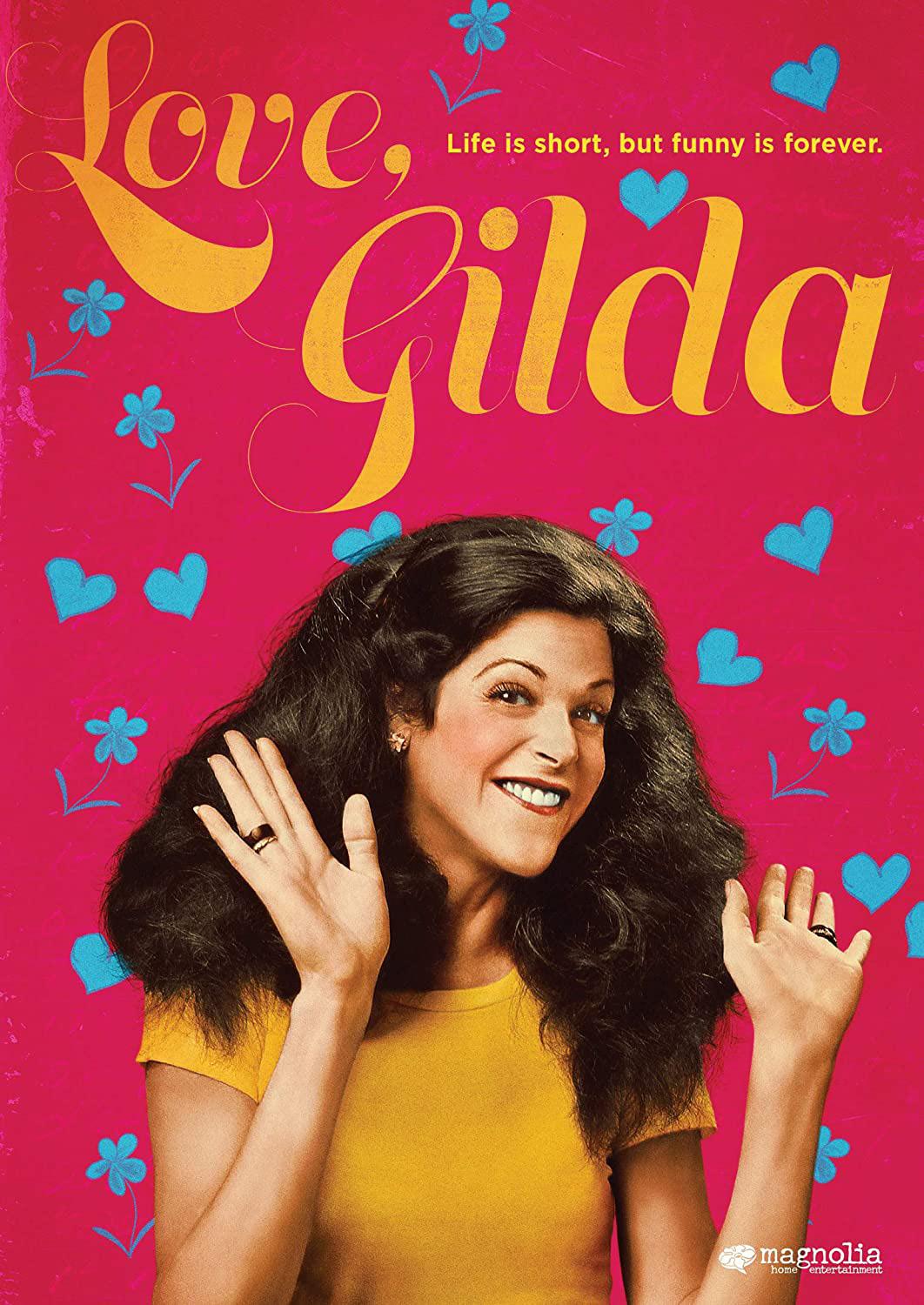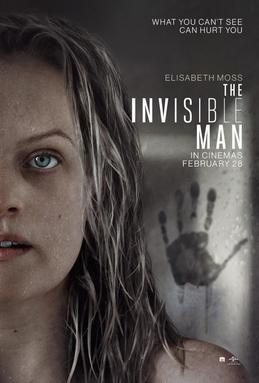
15 minute read
DVD reviews
Marijuana blamed for woman’s decline in She Shoulda Said No!
She Shoulda Said No & The Devils Sleep Other, Blu-ray, $29.95 The sixth entry in Kino Lorber’s Forbidden Fruit: DVD TALK lured in by mister fancypants, Markey (Alan Baxter) and gets really into smoking pot. She gets canned from her taining slice of vintage exploitation. It doesn’t really bring anything new to the drug scare film formula, but it does what it does rather well, showing us how that evil weed can so easily lead The Golden Age Of The Exploitation Picture, which IAN dancing gig and winds up working for Markey, moving to the corruption and downfall of an otherwise innocent, if slightly naïve, is done in conjunction with Something Weird Video, JANE quickly toward rock bottom. When Bob finds out what’s person. That said, Sam Newfield, credited is 1949’s She Shoulda Said happened to his sister, he here as Sherman Scott, paces the No!, a 71-minute look at hangs himself! picture pretty well and keeps enough the evils of recreational marijuana use! When Anne’s former employer turns coming at us throughout the film’s
Advertisement
Also known as Wild Weed and as The her in, she lands herself a stint in the brisk 71-minute running time that Devil’s Weed, this picture, presented by clink. During her stint behind bars, a the picture proves consistently enterlegendary exploitation film pioneer cop named Hayes (Lyle Talbot) enlists taining, even if it is a little bit on the Kroger Babb, stars lovely Lila Leeds as her aid in bringing down Markey and predictable side in terms of how it all a young woman named Anne Lester. Jonathan Treanor (Michael Whalen), plays out. She makes ends meet as a dancer, using the man behind the whole operation, The scene where Anne gets her whatever extra money she can scrape once and for all! first glimpse of prison life and sees, together to help get her brother Bob “Rips the veil of secrecy from first hand, where her choices could (David Holt) though college. She winds marihuana smokers!” take her is quite memorable for how up falling in with some bad seeds, She Shoulda Said No! is pretty entermelodramatic it all is.
We’re all in this together.
These are unsettling times.
Like you, we’re thankful for the professionals who work to keep communities safe and healthy during this COVID-19 crisis.
Our people live and work in communities like yours. We’ve taken steps to keep our employees healthy and safe—including alternative work arrangements to support social distancing. Through these uncertain times, we know it’s important we continue to deliver the affordable and reliable energy we all need to fuel our lives—with safety remaining our first priority.
Stay healthy. Stay safe. We’re all in this together.
Interestingly enough, the beautiful Ms. Leeds was cast by Babb for the lead in this role to take advantage of the publicity that erupted when she, along with Robert Mitchum, was busted for illegal use of marijuana a year before this picture was made, once again proving the old adage that there’s no such thing as negative publicity.
She’s quite good here, actually, very likable and believable enough as the gal who just got mixed up with a bad crowd. If nothing else, she’s very sympathetic in the role, and that goes a long way.
Supporting work from Alan Baxter and Michael Whalen as the two heavies in the film is pretty enjoyable, while Lyle Talbot does a nice job chewing some of the scenery as a stereotypical hard-boiled cop, the kind that won’t rest until he gets his man.
It’s also worth keeping your eyes open for a small role for the instantly recognizable Jack Elam, cast here as a henchman in one of his first roles.
She Shoulda Said No arrives on Blu-ray transferred from an unspecified source but from elements that look to be an archival print. The AVC encoded 1080p high definition transfer is framed at 1.33.1, the film’s original aspect ratio, and it takes up 18.2GBs of space on the 50GB disc.
There’s print damage noticeable throughout, mostly vertical scratches, but if you can look past that this isn’t in particularly bad shape for a low-budget exploitation picture fast approaching its centennial. The black and white picture shows occasional contrast blooming but that is almost certainly a result of the original camera work. Black levels are decent and the grey scale here is fine.
Detail levels are quite good given the age of the elements, and the transfer stays film-like from start to finish, showing no issues with noise reduction, edge enhancement or compression artifacts.
The English language 16-bit LPCM Mono track is on par, quality wise, with the video. There are no alternate language subtitle options provided but English subtitles have been included. There’s a little bit of hiss here and there and range is quite understandably limited but dialogue stays clean and clear and easy enough to follow. The levels are properly balanced throughout, and while there are some audible defects here and there, overall it sounds just fine given the history of the picture and the elements available to use for this release.
Extras start with an audio commentary from Alexandra HellerNicholas that, like the author’s other commentaries for this series, is quite an interesting listen. There’s a lot of focus here on Lila Leeds and plenty of detail about her aforementioned arrest with Robert Mitchum, but there’s also a lot of info here about Babb, some thoughts on the director’s work on this picture, the cast, the themes that the film explores and plenty more. This is definitely worth taking the time to listen to.
A second feature, the 76-minute The Devil’s Sleep, also from 1949 and also known as Hopped Up, is also included. Touted as “an expose of the pep pill racket”, the film introduces us to one Umberto Scali (Timothy Farrell), a man who runs a health spa for women where he runs a clandestine operation pushing uppers, bennies and the like, preying on his clientele, most of whom are hoping to make some progress with their weight loss goals.
Scali wants more, however, and in order to bring in more clients for the illegal side of his business, he hires a sleazy dud to pose as his nephew, get a big old party going, and get all of the kids who attend hooked on bennies, a plan that, should it work, will massively increase the size of his customer base.
The noble Judge Rosalind Ballentine (Lita Grey-Chaplin) gets wind of what Scali’s up to and hopes to find a way to shut him down, but when her daughter is photographed at one of Scali’s shindigs, she backs off. Thankfully for society at large, there are a couple of honest cops around who know what it takes to deal with the likes of Scali!
Directed by W. Merle Connell, this is another drug scare film, though this one does at least tackle something a bit more dangerous than weed. It’s pretty melodramatic and at times quite over the top in its depiction of narcotic use, but it’s entertaining in that way that old drug scare films are entertaining.
Farrell is a kick to watch as the main villain in the film, and the script gives him and the rest of the cast plenty of top-notch terrible material work with.
The film was produced by George Weiss, who bank rolled Glen Or Glenda? for Ed Wood.
The black and white film is presented in AVC encoded 1080p high definition and famed at 1.33.1, taking up 19.2GBs of space, once again taken from elements in less than pristine condition but completely watchable if you don’t mind the print damage. The English language 16-bit LPCM 2.0 Mono track has some hiss and occasional distortion but otherwise is serviceable enough.
Optional English subtitles are provided.
Rounding out the extras on the disc are trailers for She Shoula Said No!, The Devil’s Sleep (Hopped Up), Test Tube Babies, Pin-Down Girls (Racket Girls)

and Marihuana. Menus and chapter selection are also provided.
The Kino Lorber/Something Weird Video Blu-ray release of She Shoulda Said No! and The Devil’s Sleep is a blast, the type of schlock that fans of vintage exploitation pictures and drug scare films will have a field day with.
The presentation is about as good as the elements will likely allow for, and the commentary and bonus trailers add some value.
Lila Leeds as Anne Lester on the downward spiral as she takes her first puff of marijuana in She Shoulda Said No! The year before this film was made, Leeds and fellow actor Robert Mitchum were arrested on a marijuana charge.
Recommended!
Love, Gilda leaves out some key players
Love, Gilda Magnolia Home entertainment, $26.98
There are a lot of female comedians and comic actors working today on stage, in movies and on television, and one would imagine if they DVD had to put together TALK a Mount Rushmore of influences on their RYAN KEEFER work, Gilda Radner would easily make the list.
The Second City alum and member of Saturday Night Live’s Not Ready for Prime Time players initial cast held her own and some of her male cohorts at times with characters like Roseanne Roseannadanna before moving on from the weekly grind of late night sketch comedy, ultimately to be taken from the world much too soon at the age of 42 due to ovarian cancer.
Lisa D’Apolito combined with Radner’s estate teamed up to make Love, Gilda, using a wealth of audio tapes, journals, pictures and home movies of Radner throughout her life.
The film also includes interviews with many of those who Radner worked with, including Martin Short (Inherent Vice), SNL producer Lorne Michaels, former David Letterman band leader Paul Shaffer and members of Radner’s family. Fans of Radner that went on to do SNL including Amy Poehler (Parks and Recreation) and Bill Hader (Barry) share their thoughts on her as well, along with non SNL alums and comic actresses like Melissa McCarthy (The Heat). They share their thoughts on Radner’s work and life, what kind of person she was and seemed to be, and how much they miss her.
There is little doubt that Radner was a dear person and that her life, even in death touched many people. Before doing the film, D’Apolito was shooting a promotional piece for the charity in Radner’s name, and her exposure to
Fun, artsy fashions that make you happy!

Downtown Duluth & Miller Hill Mall
Shop online: artinthealley.com #rightupyouralley • (218) 348-5009

those suffering from cancer combined with recollections from others inspired her to do the documentary.
Given the context of Radner’s life in the film, it does provide even a seasoned fan of her work a newfound and emotional appreciation for her appearance on Garry Shandling’s show before the recurrence of her cancer that led to her death.
In getting the estate’s cooperation to provide so much material about Radner, from Radner in the film, D’Apolito’s choice of Radner telling her story is both a positive and negative.
On one hand, there are the feelings you have as you see her life unfold and just how much love played a part in her work and her life.
On the other, it still leaves a feeling of incompletion to the film that there isn’t more appreciation from those around Radner through her life.
Strangely, SNL friends (and later lovers) Bill Murray, Dan Ackroyd and onetime bandleader/husband GE Smith were not interviewed, though Short, as Radner’s onetime boyfriend, was. Whether they were approached is unknown, but they presumably would have loved the chance to share their thoughts about the woman they worked with and loved.
In a way I get the omissions, they serve as a bit of selfishness for the viewer (or this viewer at least), and it deters from telling the story of Gilda’s life in Gilda’s words. And in a film where love is a central talked about theme, I don’t think you could love or show love for Gilda Radner enough.
At some point you have to stop, and if stopping the telling of Gilda Radner’s life results in some disappointment, it’s a minor blemish on an otherwise straightforward and passionate telling of a remarkable woman’s existence.
Love, Gilda is presented in 1.78:1 widescreen with the film looking like a gem. It juggles SNL, Radio City and concert footage adeptly, as well as numerous stills and home movies that span the decades of Radner’s life. Television footage looks natural and colors are consistent as can be, and the interviews of contemporary subjects looking vivid in the clothing and hair colors.
Magnolia does very well by the focus of the feature and invigorates the subject of Radner’s life and legacy.
The film gets a 5.1 Dolby Digital soundtrack but doesn’t have a lot to do. The sounds of the day sound good and the home movies have a crisp, even immersive feeling to them even if they are scant. Interviews are consistent in the front of the theater and do not possess any dropouts or hissing. Everything generally occurs in the front of the viewer, so little in the way of channel panning or directional effects to come, given the source material. Still a fun listen regardless.
Perhaps some more could have been done in this area; Radner’s movies on an expanded level are included (10:19), along with a stills gallery and trailer (2:30), though the big feature is additional interview footage with most of those who appear in the film (37:33), which is a nice complement to it.
In Love, Gilda, we get to see a big reason why a lot of women who are in comedy pursue it, and Radner’s life, (most of the) warts and all is shown with loads of moments to make you laugh, cry, think and remember fondly. Technically it’s fine and the bonuses could have used some more work but it’s a superb look back at Radner’s time on earth with love. Lots and lots of love.
The Invisible Man puts Universal’s Dark Universe on the right track
The Invisible Man Universal, 2020
What Universal didn’t understand with their wildly miscalculated Dark Universe, an attempt to ape the MCU (Marvel Cinematic Universe) by adapting the 1930s Universal monster movies into big budget tentpoles, is that the originals, as grand and fantastical as they may be, thrived on small scale and
MOVIE intimate terror. Expanding REVIEW the budget a hundred times and cranking
OKTAY EGE up the action strips the chill
KOZAK factor from these tales, as evidenced by 2017’s “inaugural” Dark Universe disaster, The Mummy, which shut down the whole cinematic universe shebang before it barely started.
Desperate to squeeze any last drop from this franchise for some reason, Universal decided to start from scratch once again with a lower-budget, cerebral slow-burn horror approach, wisely bringing in producer Jason Blum’s unique talents for serving B -horror with a prestige finish.
Their first entry is a me-too-era modernized adaptation of The Invisible Man, a near-perfect blend of patient, suspense-based, spooky horror and pulse-pounding action that masterfully rides the thin line between schlock and legit thrills.
By hiring writer/director Leigh Whannell, who created one of the most gripping hyper-violent B-action flicks of recent years with Upgrade, and who wrote for the Saw and Insidious franchises, Universal all but guarantees a fun genre ride that doesn’t cheap out or condescend when it comes to delivering the intimate scares.
After the film’s box-office success, I can’t help but look forward to other smaller scale Universal Monster adaptations that draw inspiration from contemporary themes.
Frankenstein, but about cloning or artificial intelligence?
The Wolfman, but about toxic masculinity?
The possibilities are endless.
The Invisible Man settles its pedigree

as a genuine deliverer of intense tension with a cold open that doesn’t contain any of the film’s core scifi premise. It’s a fairly grounded, and therefore thoroughly terrifying sequence that shows abused wife Cecilia (Elizabeth Moss) trying to sneak away from her sleeping husband Adrian (Oliver Jackson-Cohen) without waking him up. Even though we haven’t yet witnessed Adrian’s wrath over Cecilia, the scene is full of terror because the situation is one that women can immediately identify with, and Moss’ intense performance immediately communicates that things won’t be pretty if any noise awakens Adrian.
Even after the news that Adrian took his own life, Cecilia spends the next couple of weeks coming to terms with her trauma, barely able to walk a couple of steps outside of the house that her sister Emily (Harriet Dyer) set up for her. But even in this safe space, Cecilia begins to feel a presence forming around her. I s it the product of her overworked and battered mind, or did her tech genius husband actually found a way to fake his death and build a device that makes him invisible?
Judging by the expectations of the title and the IP, we know what’s going on, but it’s of course hard for Cecilia to convince the other characters about this reality, especially considering her increased possibility of severe mental illness due to her years of trauma. As the spooky incidents escalate, Cecilia is confronted with either a ruined life, or a return to her “marital bliss.”
Whannel splits the tonal approach of his film with surgical precision. The first half builds slow and patient scares that pay off tremendously because they know exactly when to reach their crescendos.
The suspense-heavy approach resembles the spooky moments in the Paranormal Activity franchise, but with, you know, actual cinematography, acting, and screenwriting.
As the sci-fi elements of Adrian’s invisibility comes to the fore, the second half adopts a more actionheavy approach, with a killer third act hallway fight sequence that resembles one of the many show-stopping scenes from Upgrade, only with the antagonist being completely invisible.
Boosted by a great central performance from Moss, which always keeps the story grounded, no matter how over-the-top some of the film’s tech can become, Whannell once again proves that he’s a formidable writer/ director when it comes to delivering mid-budget mainstream thrills.










